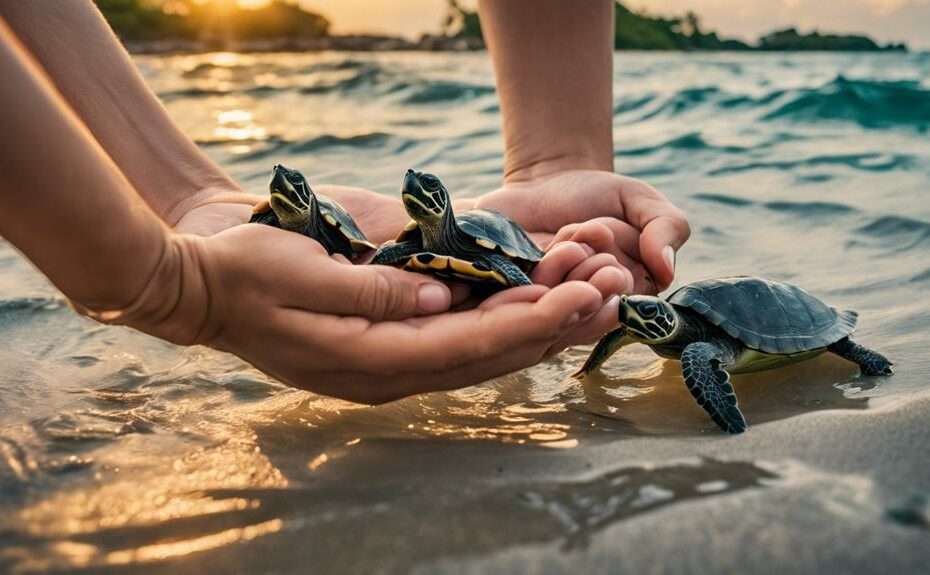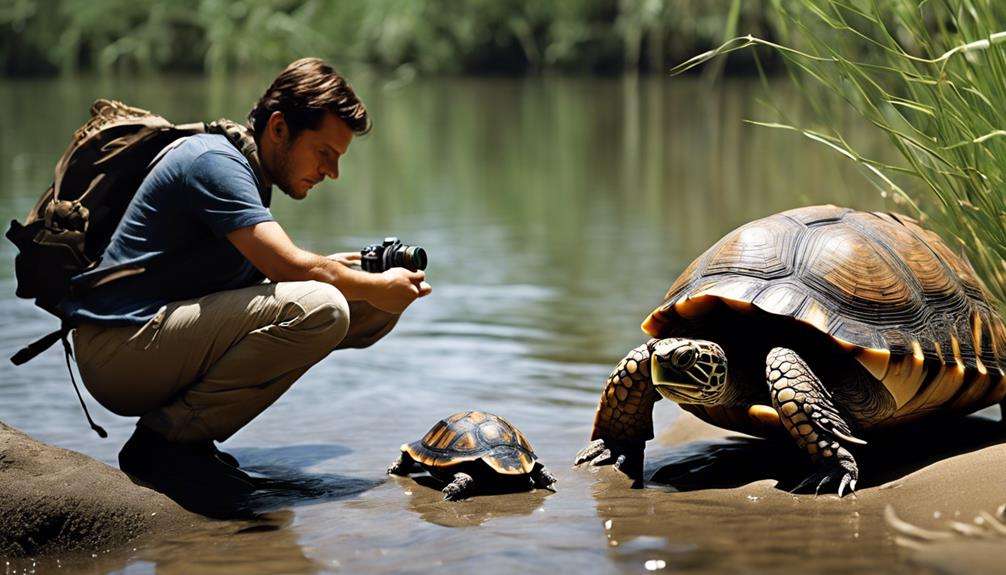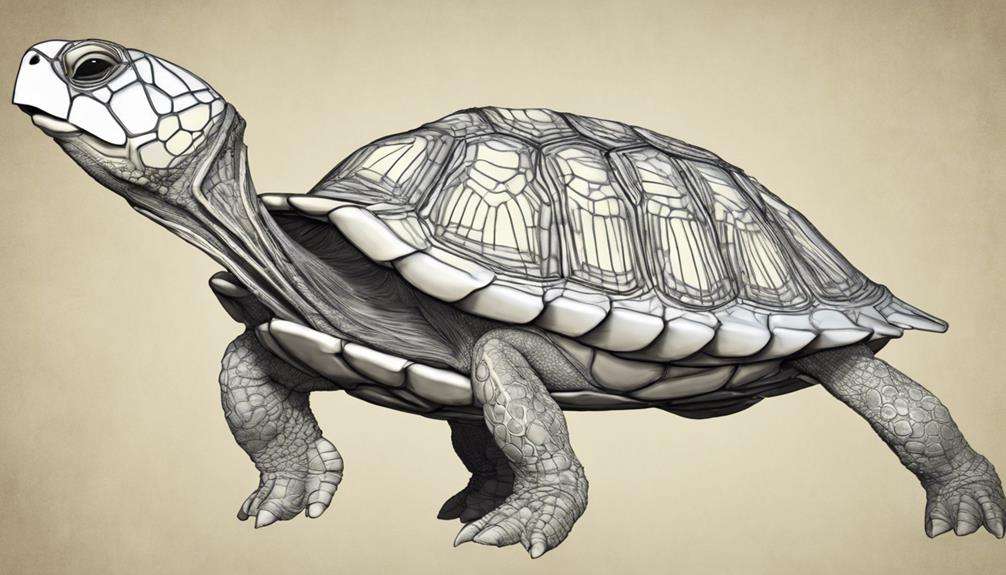Have you ever pondered the intricate web of connections that sea turtles weave within marine ecosystems? These majestic creatures are not only marvels of nature but also serve as linchpins holding delicate habitats together.
Understanding the critical importance of turtle protection programs goes beyond safeguarding a single species; it is about preserving the very foundation of our oceans' health and importance.
By delving into the depths of these programs, you uncover a world where every effort counts, where the survival of endangered species hinges on our collective actions.
Key Takeaways
- Turtle protection programs safeguard endangered species and their habitats.
- Conservation efforts mitigate threats like habitat destruction and illegal trade.
- Collaboration among stakeholders is crucial for the success of protection programs.
- Preserving nesting sites and reducing human disturbances ensures the survival of rare turtle populations.
Importance of Endangered Turtle Species
Endangered turtle species are indispensable components of ecosystems, playing a pivotal role in preserving biodiversity and ecosystem stability.
Sea turtles, as one of these endangered species, are essential in maintaining the health of marine habitats. Protecting sea turtles is critical not only for their own survival but also for the well-being of the ecosystems they inhabit.
Conservation efforts focused on these endangered species have a ripple effect on the preservation of nesting beaches and coastal areas, which are integral parts of their life cycle.
Threats to Rare Turtle Populations
With the relentless threats of habitat destruction, pollution, climate change, and illegal trade looming over rare turtle populations, urgent action is imperative to safeguard these invaluable species. Sea turtle protection is vital as these creatures face numerous challenges.
Bycatch in fishing gear poses a significant threat, leading to accidental capture and death of turtles. Habitat degradation, caused by coastal development and pollution, further compounds the issue by reducing suitable nesting and foraging grounds. Poaching for turtle meat, eggs, and shells remains a persistent problem, driving population decline in many rare turtle species.
These threats, coupled with the impacts of climate change such as rising temperatures and sea levels, exacerbate the vulnerability of these creatures. To combat these challenges, conservation efforts must focus on implementing stronger regulations, protecting critical habitats, reducing human-wildlife conflicts, and raising awareness about the importance of preserving rare turtle populations for future generations.
Role of Turtle Protection Programs
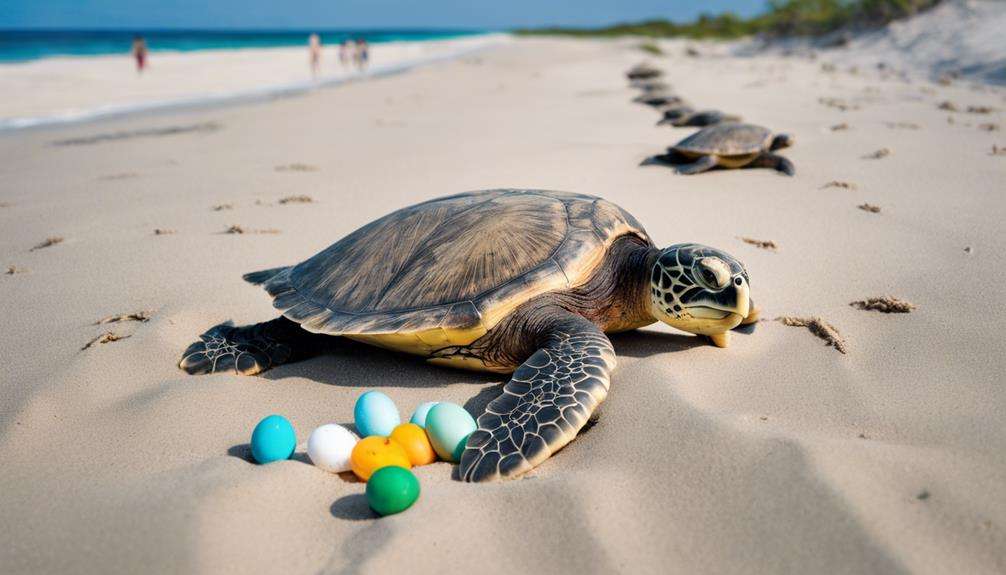
Turtle protection programs play an important role in safeguarding the survival of endangered species by actively preserving their habitats and reducing threats. Sea turtles, protected under laws like the Endangered Species Act, rely on specific coastal areas for nesting, feeding, and migration. These programs work to protect these critical habitats from destruction caused by human activities such as development and pollution.
By implementing conservation laws and regulations, they aim to mitigate threats that could further endanger these species. Monitoring efforts within these programs provide valuable insights into sea turtle ecology and behavior, aiding in informed conservation decisions. Collaboration among various stakeholders, including governments and conservation organizations, is vital for the success of turtle protection programs.
Through these collective efforts, we can guarantee the continued existence of sea turtles and contribute to the preservation of marine biodiversity.
Conservation Efforts for Rare Turtles
You must prioritize turtle habitat protection to guarantee the survival of rare species.
Implement anti-poaching measures rigorously to combat the illegal trade threatening these vulnerable turtles.
Collaborate with international partners to bolster conservation efforts and safeguard the future of rare turtle populations.
Turtle Habitat Protection
Implementing stringent regulations to protect critical nesting beaches and reducing human disturbances are essential strategies in the conservation efforts for rare turtles. Sea turtles face numerous threats, with habitat loss being a significant concern due to coastal development and pollution.
Conservation programs focusing on preserving nesting sites play an important role in the survival of endangered turtle species. By safeguarding these habitats, we guarantee that turtles can successfully nest, hatch, and thrive.
Monitoring and managing nesting sites, controlling light pollution, and mitigating threats from predators and human activities are key components of habitat protection initiatives. These efforts are necessary for maintaining biodiversity, ecological balance, and the long-term survival of endangered turtle populations.
Anti-Poaching Measures
Law enforcement and patrols play a critical role in safeguarding rare turtle species from illegal exploitation and trade through anti-poaching measures. By implementing strict penalties and regulations, authorities deter individuals from harming endangered turtles and their habitats.
Conservation organizations collaborate with local communities to raise awareness about the importance of protecting rare turtles and the consequences of poaching. Monitoring and surveillance programs are essential for detecting and preventing poaching activities that threaten the survival of endangered turtle species.
Working closely with law enforcement agencies and wildlife authorities strengthens anti-poaching efforts, ensuring effective enforcement of regulations to safeguard rare turtles. It's imperative to continue these anti-poaching measures to combat illegal exploitation and trade, ultimately contributing to the conservation of endangered turtle populations.
Impact of Human Activities on Turtles
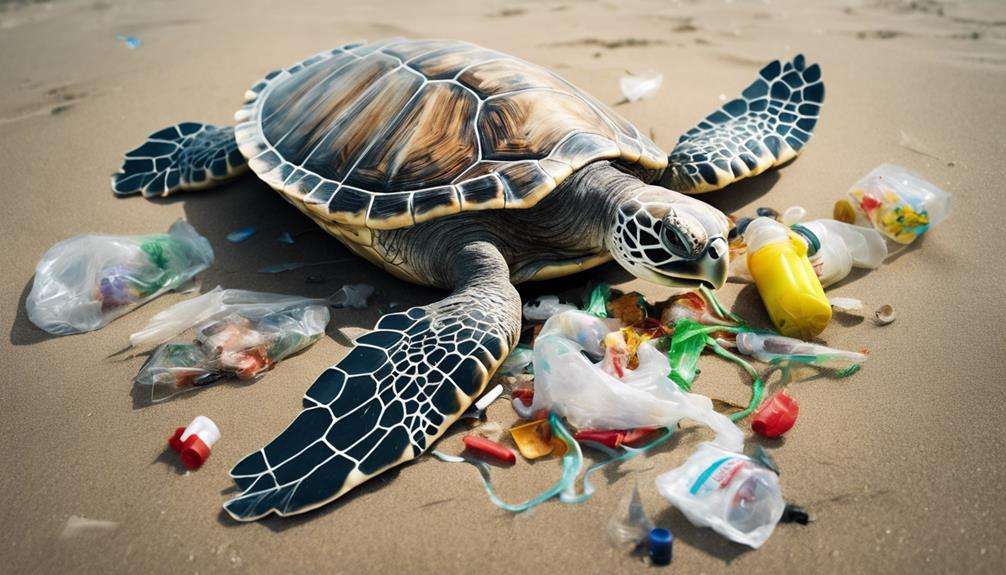
Human activities such as pollution, habitat destruction, and climate change have emerged as significant threats to sea turtle populations globally.
Habitat destruction due to coastal development and artificial lighting disrupts nesting behaviors, leading to hatchling disorientation. The presence of plastic pollution in oceans poses a grave danger to turtles, as they can ingest or become entangled in discarded fishing gear.
Climate change impacts, such as rising sea levels and temperature changes, directly affect turtle nesting sites and food availability, jeopardizing their survival. Additionally, overharvesting of turtle eggs and adults for consumption or trade further exacerbates the vulnerability of these already endangered species.
The combination of these factors paints a bleak picture for sea turtles, underscoring the urgent need for conservation efforts to mitigate the impact of human activities on these majestic creatures. It's imperative that immediate action is taken to protect sea turtles and guarantee their continued existence in the face of mounting threats.
Benefits of Protecting Endangered Turtles
The detrimental impact of human activities on sea turtle populations underscores the critical importance of understanding the significant benefits that come from protecting these endangered marine species. Endangered turtles play a crucial role in maintaining biodiversity and ecosystem balance in marine and coastal environments. Conservation efforts aimed at safeguarding these species not only benefit the turtles themselves but also contribute to the overall health of ocean ecosystems. By protecting endangered turtles, we support various marine species that depend on them for food and habitat, ultimately fostering a more resilient and diverse marine environment.
Additionally, conservation programs for endangered turtles have the added benefit of promoting sustainable tourism practices. Healthy turtle populations attract eco-tourism, which not only brings economic advantages to coastal communities but also raises awareness about the importance of preserving marine ecosystems. Additionally, preserving endangered turtles can help mitigate the impacts of climate change by enhancing ecosystem resilience and adaptation. By safeguarding these iconic marine species, we also guarantee the preservation of cultural and traditional values associated with them.
Collaborative Conservation Initiatives
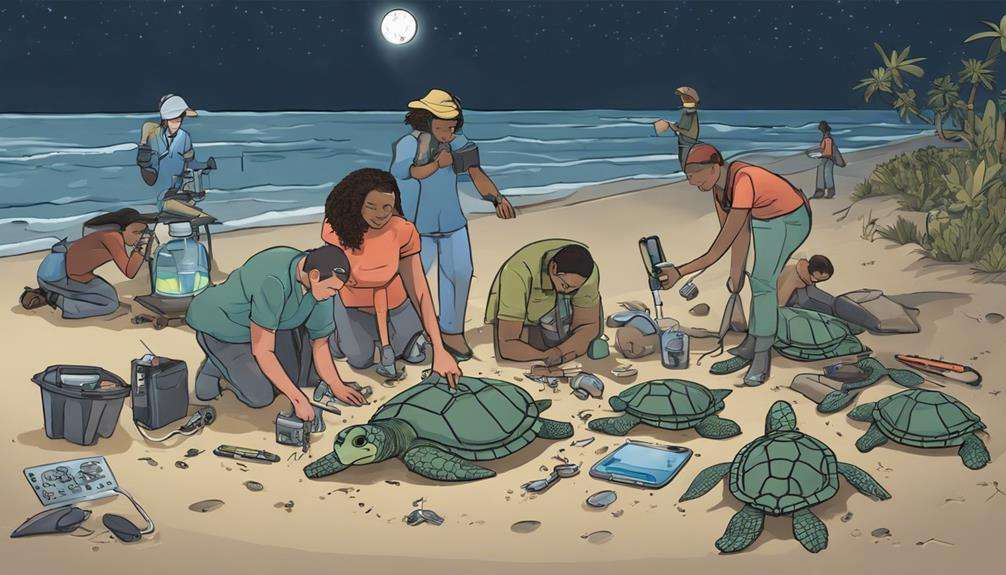
Collaborative conservation initiatives unite diverse stakeholders in joint efforts to protect endangered sea turtles.
Shared protection goals drive these partnerships towards collective preservation actions.
Engaging in these initiatives is essential for the sustainable conservation of threatened turtle species.
Joint Conservation Efforts
Joint conservation efforts play a pivotal role in safeguarding endangered sea turtle species and marine ecosystems. International sea turtle conservation initiatives, such as partnerships with organizations like the Loggerhead Marinelife Center and government agencies, work tirelessly to protect these majestic creatures.
Through collaborative programs, sick sea turtles are rehabilitated, beach cleanups are conducted, and awareness about pollution prevention is raised. With over 70 global partners, including Florida Fish & Wildlife and NOAA, joint conservation projects guarantee the well-being of sea turtles.
These efforts focus on inspiring daily ocean conservation practices through collective action from governments, nonprofits, businesses, and individuals. Collaborative conservation programs are essential for the survival of endangered sea turtle species and the preservation of marine ecosystems.
Shared Protection Goals
In safeguarding endangered sea turtle species and marine ecosystems, the focus shifts towards achieving shared protection goals through collaborative conservation initiatives. Partnerships with organizations like Florida Fish & Wildlife and NOAA are essential in these efforts.
These initiatives, such as rehabilitating sick sea turtles, conducting beach cleanups, and raising awareness about pollution prevention, are necessary for the conservation of sea turtles. With over 70 conservation partners globally working alongside organizations like Loggerhead Marinelife Center, the collective aim is to inspire daily ocean conservation practices and guarantee the well-being of endangered sea turtle species.
Governments, nonprofits, businesses, and individuals all play a crucial role in supporting these collaborative conservation initiatives to safeguard sea turtles and their habitats.
Collective Preservation Actions
Working collectively towards the preservation of endangered sea turtle species requires a unified approach involving governments, nonprofits, businesses, and individuals. Partnerships with organizations like Florida Fish & Wildlife and NOAA play a critical role in enhancing the impact of conservation efforts.
Collaborative conservation initiatives encompass activities such as rehabilitating sick sea turtles, conducting beach cleanups, and implementing pollution prevention campaigns. These actions are essential components of collective preservation strategies aimed at inspiring daily ocean conservation practices and raising awareness about the significance of protecting sea turtles.
The success of turtle protection programs and the conservation of endangered species heavily rely on the combined efforts of various stakeholders dedicated to the cause.
Future of Endangered Turtle Species
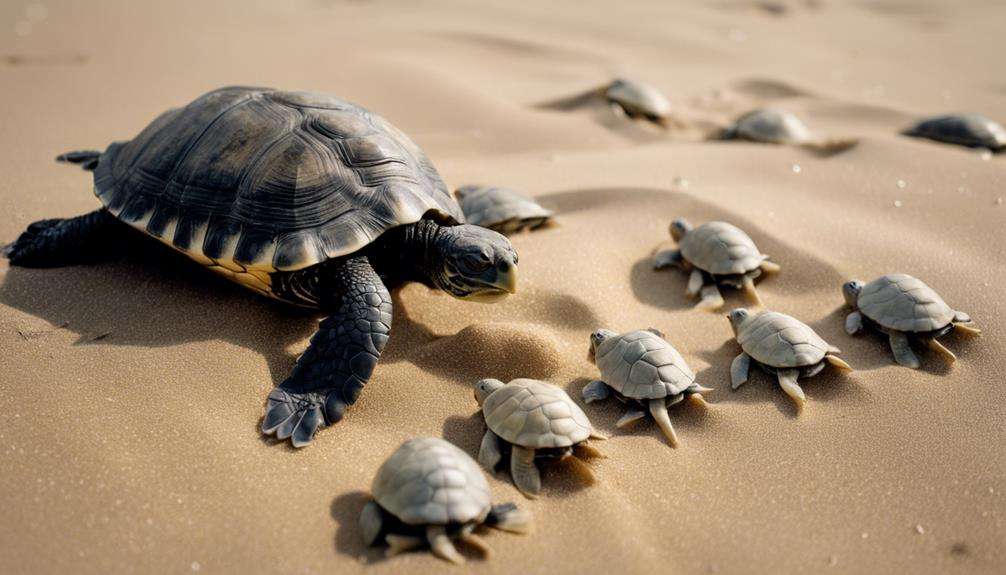
To secure the future of endangered turtle species, concerted efforts must focus on bolstering protection programs and addressing the multifaceted threats they face. Endangered turtle species are at risk due to habitat loss, pollution, climate change, and poaching.
Conservation efforts are important to increasing nesting success, reducing bycatch in fishing gear, mitigating human impacts, and restoring critical habitats for these turtles. Understanding the population dynamics through research and monitoring is essential to developing effective conservation strategies.
Collaboration between governments, NGOs, scientists, and local communities is key for the successful implementation of protection programs. By raising awareness, enforcing regulations, conducting research, and implementing conservation strategies, we can actively work towards the recovery and sustainability of endangered turtle populations.
It's crucial that we continue to invest in these protection programs to guarantee a future where endangered turtle species thrive in their natural habitats.
Frequently Asked Questions
Why Is It Important to Protect Turtles?
Safeguarding turtles is crucial for marine conservation, ecosystem preservation, and biodiversity protection. By protecting these species, you contribute to wildlife sustainability, habitat restoration, and species survival. Your actions directly impact the health of our oceans and planet.
Why Is It Important That Measures Be Taken to Save the Endangered Sea Turtle and Its Habitat?
To guarantee the survival of endangered sea turtles and their habitat, conservation efforts are essential. Population decline threatens marine ecosystems and biodiversity. Protecting these species means preserving essential ecosystems, preventing habitat destruction, and promoting species resilience.
How Can We Help Endangered Turtles?
To help endangered turtles, you can join beach cleanups, monitor nests, support education programs, promote sustainable fishing, restore habitats, and engage your community. Your direct actions play an essential role in safeguarding these species.
Why Are Sea Turtles Critically Endangered?
Sea turtles are critically endangered due to poaching threats, habitat loss, pollution impact, climate change, and nesting site disturbance. Conservation efforts are crucial to protect these magnificent creatures and guarantee their survival for future generations.
Conclusion
In conclusion, protecting endangered turtle species is paramount for maintaining ecosystem balance and biodiversity.
With collaborative conservation initiatives and dedicated efforts, we can secure the survival of these majestic creatures for generations to come.
Remember, when it comes to safeguarding our marine environments, every turtle saved is a drop in the ocean of conservation success.
Let's continue to work together to protect and preserve these essential species for a healthier planet.
